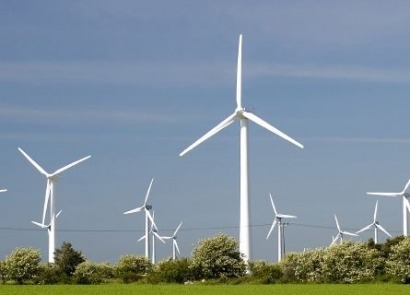
From Ontario residents’ wider perspectives, it seems that a transition to renewable energy is ideal. However, once a wind project is proposed in residents’ own backyards, public opposition forms to bring the project to a screeching halt. Despite the political support that exists on a macro-level, careful measures must be taken locally to build the support necessary to guide the project through the approval process with ease.
Despite an extensive two-year approval process with various environmental studies conducted, opponents of a 140-turbine wind proposal by K2 Wind in Goderich, Ontario recently filed a construction stay application to halt the project in its tracks.
The injunction filed intended to allow for the completion of a Health Canada study, which seeks to understand the impact of industrial wind projects on nearby residents. Already anti-wind groups have been successful on placing a moratorium on off-shore wind until the potential for impacts on marine life are identified.
However, Divisional Courts sided with K2, noting the “serious financial consequences” the company will suffer as a result of a minor delay in construction in contrast to the “lack of harm appellants will suffer” without granting their motion. Despite K2’s narrow escape of costly delays in this case, the opponents’ efforts continue.
When the $850 million K2 project was permitted, the Environmental Review Tribunal upheld approvals finding no evidence of health hazards imposed upon residents living near turbines. However, opponents of the K2 project have joined together with opponents of a 92-turbine Armow wind farm near Kincardine, Ontario and a smaller St. Columban project to appeal the Tribunal’s findings, which the group collectively claims violates their constitutional rights due to the potential health impacts.
A decision in this appeal is expected later this month. While Ontario looks on to see what will happen to K2 and future wind proposals in the province, these cases demonstrate opponents’ abilities to band together to impact the success of a proposal at any stage of development.
Anti-wind sentiments can attract supporters near and far even though a community, province, or country favors the use of renewable sources as a whole. The silent majority of supporters must be awoken to counter the misinformation and let public officials know they favor a transition to renewable power in their community. Without a strategic plan to build support from the start, wind projects in Ontario will continue to experience the wrath of a well-connected and organized opposition network.
Provide outreach
The wind industry must strive to start a dialogue and work to dispel the myths that plague most new wind proposals. The industry must inform and educate the communities they move into using a variety of outreach methods. Among these techniques are direct mailing to educate residents about project details, telephone identification calls to identify potential latent supporters, and open house information sessions to open channels of direct communication between residents and project experts who can answer questions face-to face with supporters, undecideds and opponents.
Residents want to be informed and to know the assets and drawbacks a project will bring. If project advocates do not inform them, it is a certainty that opposition groups will. Furthermore, some locals may have very legitimate concerns that require in depth answers. It is paramount that these concerns are addressed or acknowledged by the wind company itself while analysis takes place. Rather than ignore citizen complaints, industry leaders must keep residents engaged while working to find ways to address the concerns of interested parties.
Maintain contact
Companies must also build a database of supporters to call upon when a mobilization of support is needed. The question that all too often is not asked is “are you willing to help?” to awaken the silent majority of supporters. If residents are provided with “how to help” handouts and project fact sheets, they can communicate directly with public officials through coordinated letter writing campaigns and hearing attendance.
Additionally, the growing role of social media cannot be neglected. Creative content that can be shared easily is an important digital dialogue facilitator. Staunch opposition will never tire in its public outreach, and neither can those who put forth the proposal. When supporters run social media sites and get creative on multiple platforms, the media and public officials are inclined to take notice.
Maintain the Momentum
Finally, supporters must be aware that success at the local level can be overturned at the higher levels of government. Teach supporters about how to engage most effectively with their local elected officials on a continuous basis.
Make sure that every project is accompanied with a grassroots advocacy campaign that will keep the project popular both with locals and state governments. Politicians will be much more likely to stand behind industry if industry is backed by their voting constituents. With strong local and legislative support, projects will remain lasting investments.
Al Maiorino
President, Public Strategy Group
Al Maiorino started Public Strategy Group, Inc. in 1995. His firm has developed and managed multiple corporate public affairs campaigns in a variety of industries such as gaming, cable television, retail development, auto racing, energy and residential projects. Additionally, his firm has worked on projects in twenty states and three countries.
the people here are not nimby sir. The geo plant was put in the middle of 10,000 people. It has leaked, it has caused sickness. Now guess what? The LIVE volcano is flowing in this direction. The rest of the state does not give a rats a$$ for the residents here So why should we care about their electric? This has been protested since day one. YOu do not live here. You do not know.

